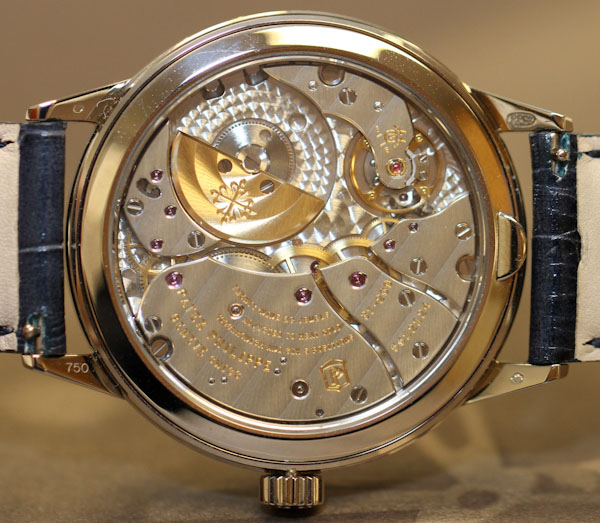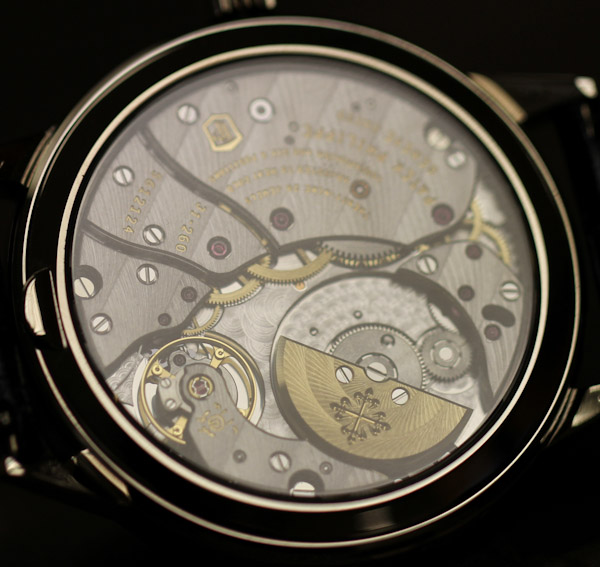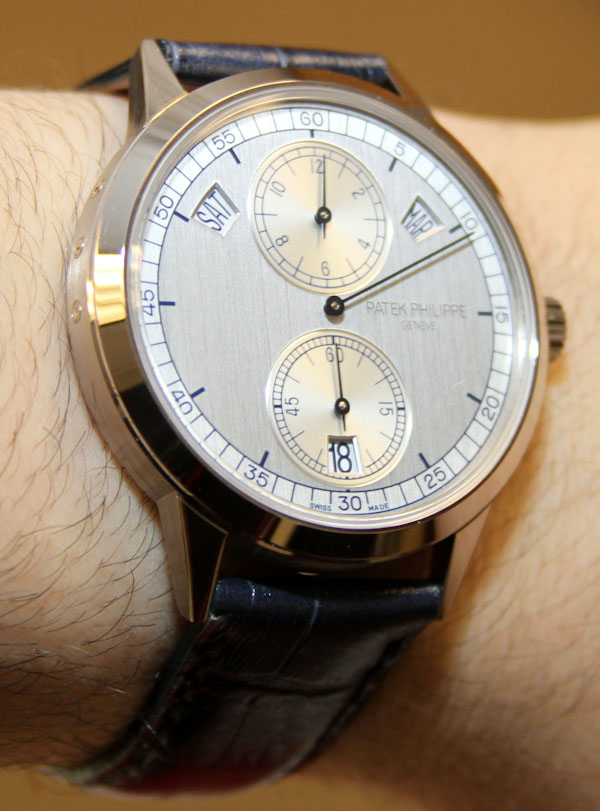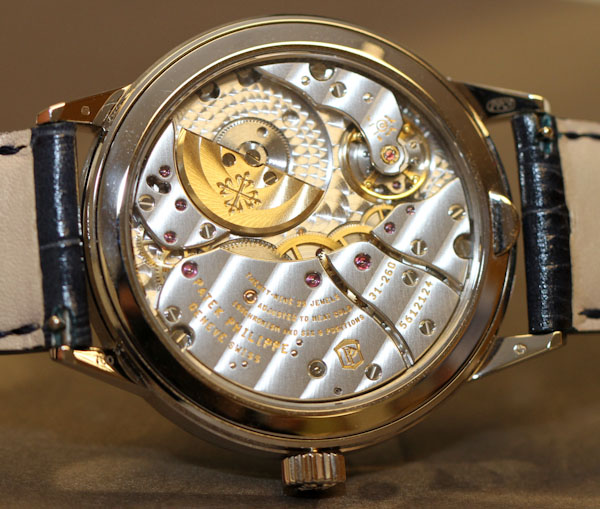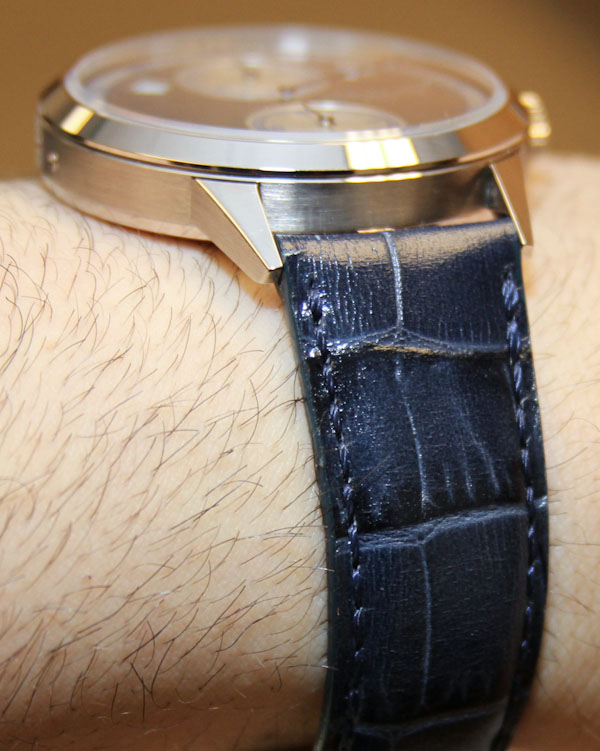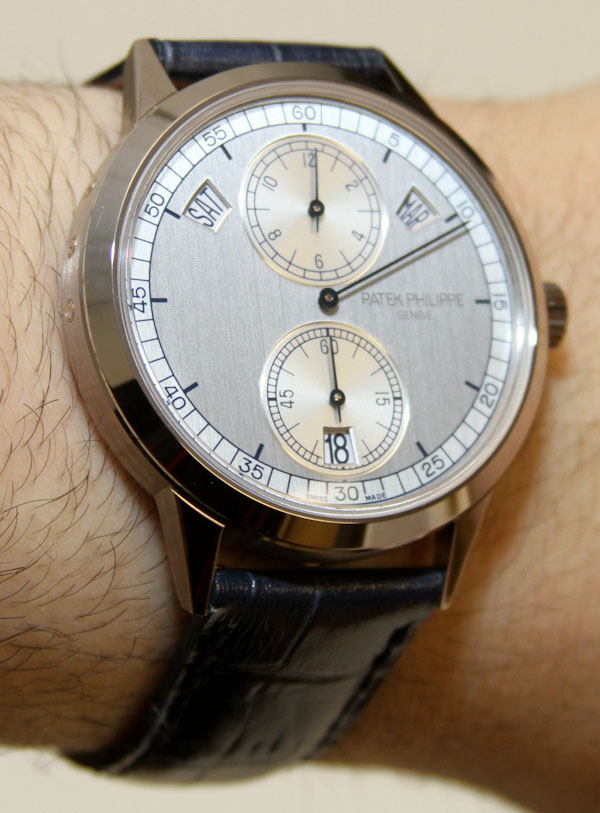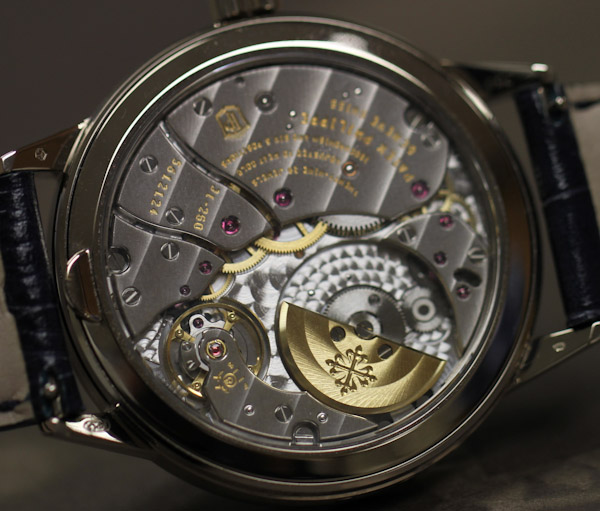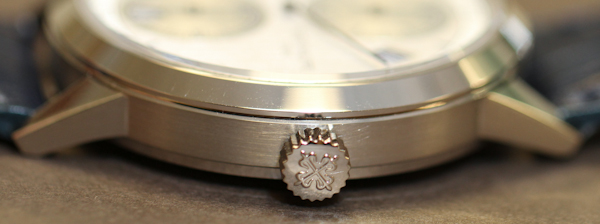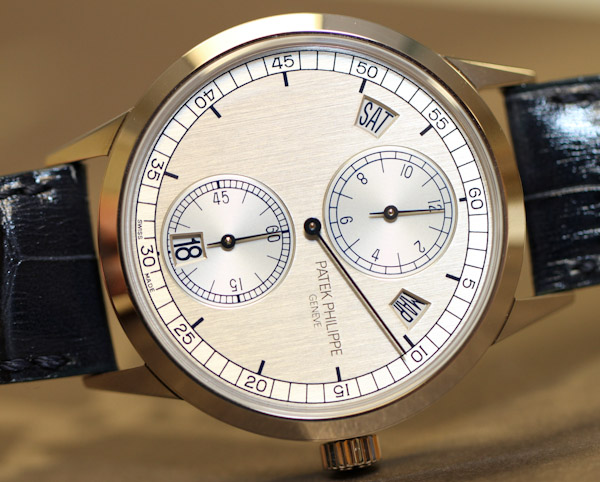
I was really happy to get my hands on a Patek Philippe Ref. 5235 watch. It apparently wasn’t ready in time to show people at Baselworld 2012. Patek shared with me that the reason for this was the dial. There is a specially engraved Patek Philippe name logo that needed to be done just right. The dial is a mostly brushed piece of metal with some fine detailing that I can imagine must have been tough to perfect. The finished version will be very impressive for watch lovers who know what they are looking at. For a Patek Philippe, the dial of the 5235 looks remarkably modern. There is a good reason for that, because in a large way this is one of the most modern Patek Philippe watches released to date.
While Patek Philippe is typically considered a traditional watch brand in poise and style, innovation is a must for them as it is for any modern company. It makes me wonder what new Patek Philippe watches will look like 100 years from now. This one is most certainly Bauhaus design aesthetic inspired, which furthers the concept of “form always follows function” and throws in a little healthy minimalism without overdoing it. The design of the dial is utterly pure, with an extreme focus on legibility, proportions, and proper contrast. Decorative embellishing is not the point of the piece. The beauty of the dial is real, and exists as an extension of how properly it performs its intended functions. The 5235 is also called the Annual Calendar Regulator – for reasons which shouldn’t require any special explanation. What does require some discussion is the movement which makes it all happen.
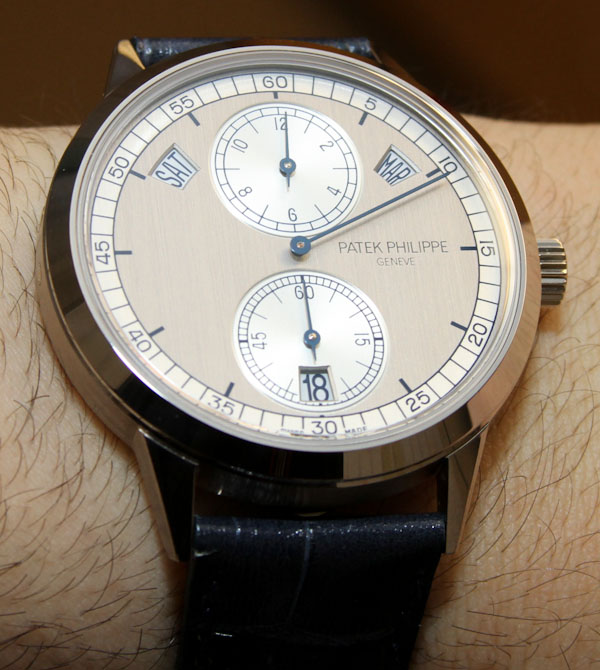
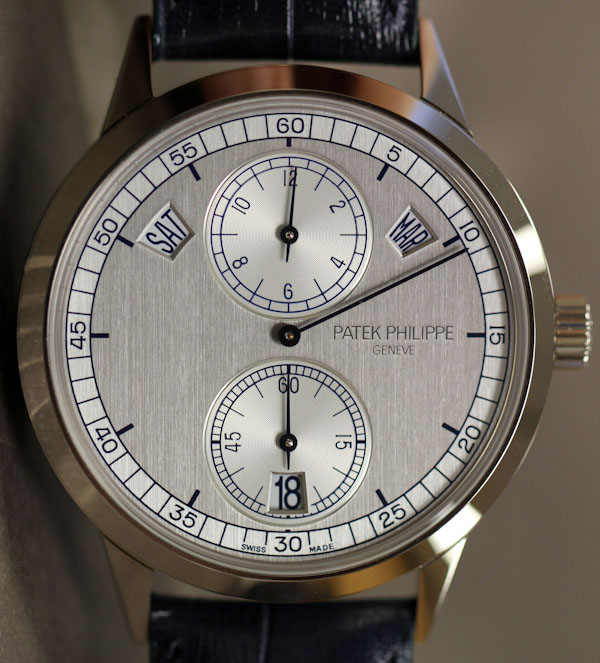
Inside this beauty is the new Patek Philippe in-house made caliber 31-260 REG QA. The base movement architecture has been around since the late 1970s, but has been thoroughly built upon. Reading the name of the movement we can see “REG” which means regulator, and “QA” which means “quantieme annual,” or “annual calendar.” The 260 series movements are automatic with micro-rotors. These aren’t easy to do properly, and Patek has been making them in a superlative manner for a long time. The micro-rotor is in 22k gold, while the movement has a power reserve of 60 hours.
A very unique quality of the movement is the frequency of its operation which runs at 3.2 Hz. I have never heard of a movement running at this rate which is 23,040 beats per hour. More standard operation speeds are 3 or 4 Hz. This is sort of between the two. Patek Philippe claims that they chose this frequency as it helped achieve the best rate results possible. As such, the Ref. 5235 is regulated to be in the range of plus or minus 2-3 seconds a day in terms of accuracy.
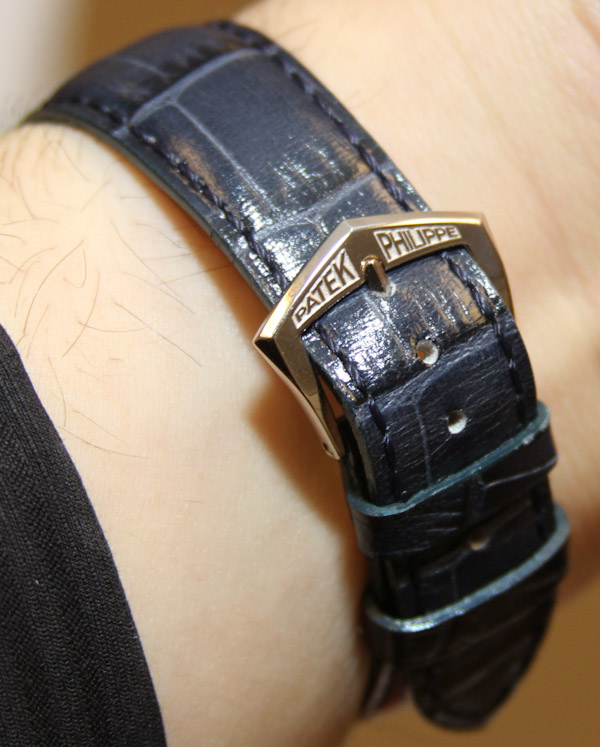
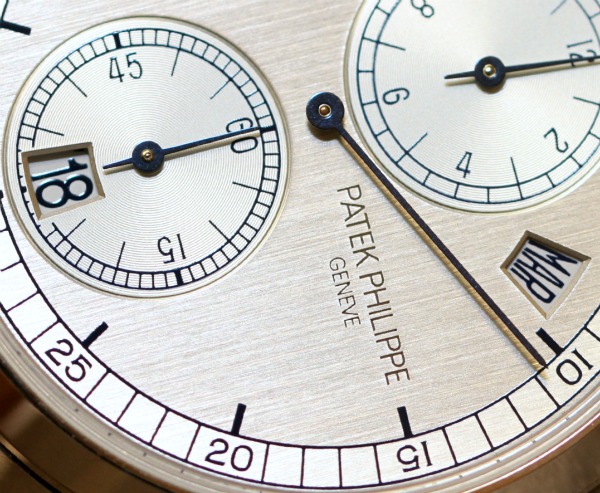
Even more exciting for mechanical movement lovers is that this is the first non-limited edition Patek Philippe watch to contain its Silinvar family of parts. This includes the silicon Spiromax balance spring, silicon Pulsomax escapement, and silicon Gyromax balance. The first Patek Philippe watch to features its high-tech Silinvar parts was the limited edition Ref. 5550P watch with a 240 Q Si movement that I covered here. Silinvar components will hopefully become a larger part of future Patek Philippe movements – ideally being integrated into existing calibers which Patek has proved it can do with the 240 and 260 family. Silicon is important in a movement because it is very wear resistant, does not require lubrication, is not affected by magnetism, offers very little friction and overall, can increase the life, accuracy and reliability of a mechanical movement.
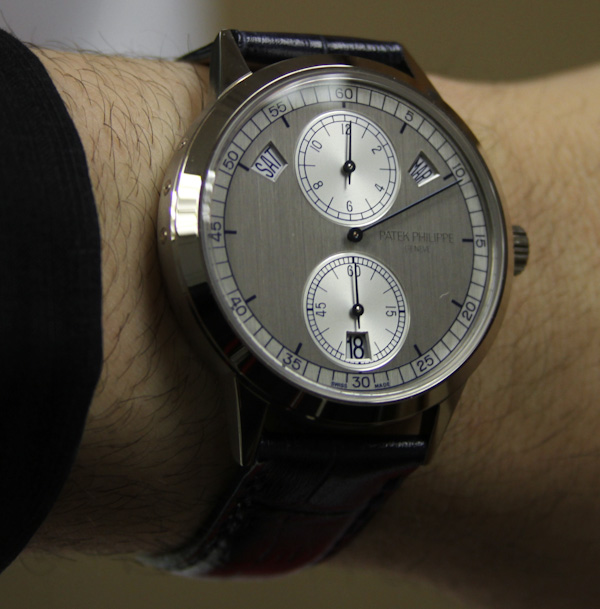
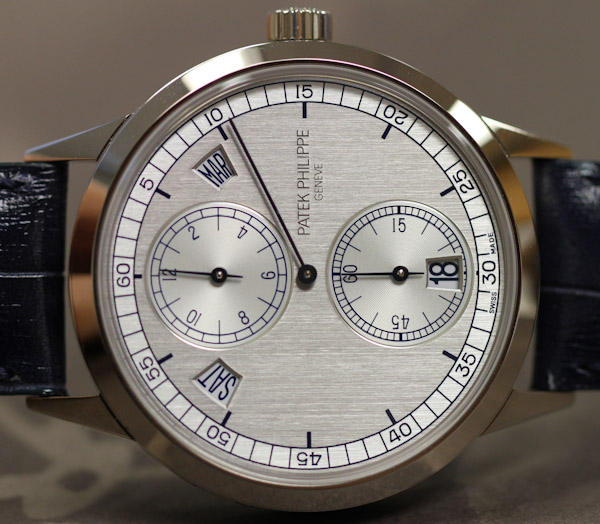
Turning the 5235 over you almost expect a conspicuous label on the movement that says “Silinvar!” Nope, nothing like that. In fact, if you didn’t know what you were looking for then you’d altogether miss that these special parts are in the movement at all. I think Patek Philippe did that on purpose. The amount of people who understand mechanical movements are small enough. So start putting labels talking about metal versus silicon on these movements and you are asking for confusion from a lot of consumers. The movement does look as nice as ever with is proper Patek finishing.
You made it this far so I might as well talk about what the watch does. I am sure there are other Patek Philippe regulator style watches, but this is the first one that I have personally come across. Regulator style watches are thematically based on old reference clocks used by watch makers and other people who needed an accurate clock to use when setting other clocks and watches. These have separate dials for the hours, minutes, and seconds. The main dial is usually reserved for the seconds while the hour and minutes get subsidiary dials. Thin blued hands do a nice job against the metallic surfaces and railroad track style markers. I will mention it now because they did such a good job, but I love how Patek Philippe matched the color of the hands with a blue alligator strap on the case. Don’t you love the design of the strap buckle? Totally retro-cool.
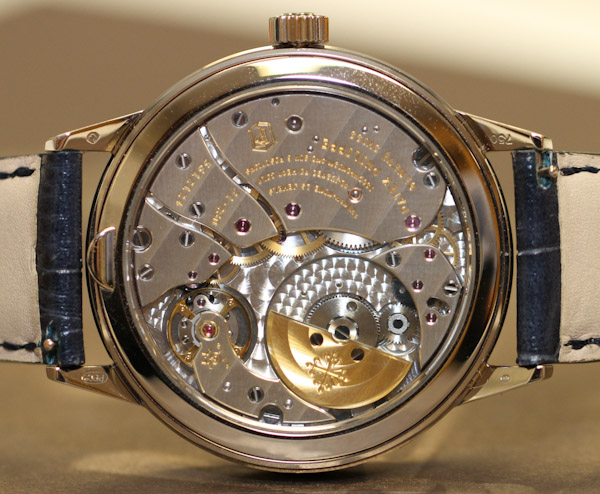
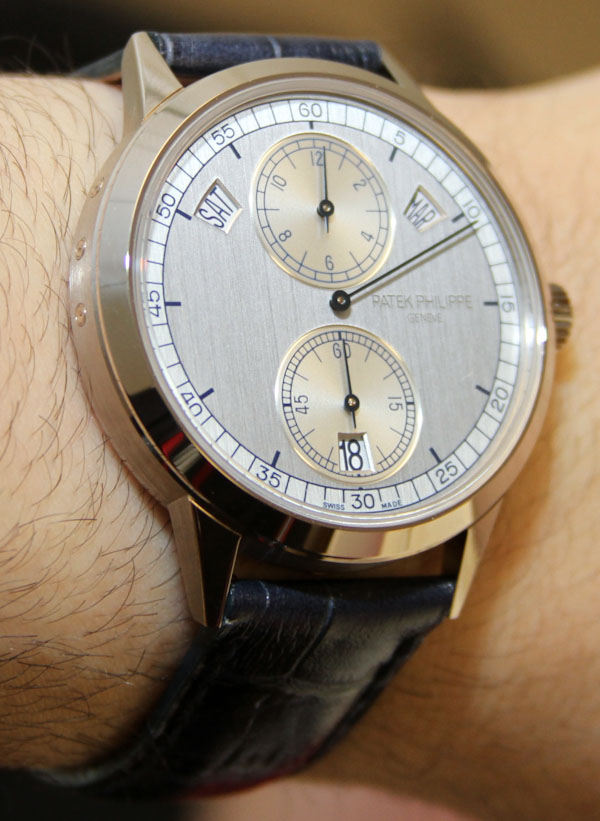
In addition to a regulator style display, the watch has a neatly integrated annual calendar with window indicators. Patek is probably the king of including a lot of calendar data onto a dial and still making it look clean and composed. On the 5235 there are three nicely laid out non-perfect square dials that indicate the day of the week, month and date. You adjust the calendar once a year in February via pushers on the side of the case. Everything about the dial is composed and symmetrical. Easy to fall in love with if you like well-designed instruments. Come to think of it, this is the Patek timepiece for tool watch lovers.
On the wrist, the 5235 isn’t huge, but is certainly considered larger for a Patek Philippe. The 2012 version of the 5235 Annual Calendar Regulator watch comes in an 18k white gold case that is 40.5mm wide. I anticipate additional case materials in future years. As a guy that doesn’t really like a small watch, I would gladly wear this one from a size and style perspective. Very well-done, the 5235 is masculine, modern, and technically impressive. In my opinion, it is the model for the Patek Philippe men’s watch of the modern era. Price is around $54,000.

